Why Sherpas & Billionaires Don't Get Jet Lag Can Fix Chronic Disease
Synchronizing biological clocks, GIGO vs QIQO, implications for modern environmental mismatches and healing chronic disease.
There is no sleep as delicious as jet-lagged sleep.
But it’s also inconvenient, especially if you need to get back to work, or make the most of precious vacation time.
Like many living in modern industrialized societies today I have a lot of experience with globe trotting jet lag. I always get constipated for a few days (not the first thing you think of with jet lag, but it happens), and of course suffer through the usual daytime fatigue lulling me to sleep in the afternoon only to wake up again at 2 - 4am.
Jet lag can also cause a lot of other symptoms in susceptible people:
Digestive upset including the aforementioned constipation, but also nausea, bloating, and changes in appetite
Headaches, trouble concentrating, impaired judgment and decision making, memory lapses.
Irritability, apathy, anxiety, and depression.
Recovery times vary person to person, but can take as long as a day for each time zone crossed, especially if you don’t make much effort to resist the enticing daytime sleep.
The advice I’ve gotten over the years to minimize jet lag from hard charging, Type-A acquaintances who can’t suffer the downtime:
once travel begins, eat on the destination schedule (so decline all the weirdly timed airline food)
spend a couple hours in the noon-time sun for a couple days on arrival
get grounded at the destination
take melatonin
Thank you for reading Dr. Syed Haider. This post is public so feel free to share it.
Numbers 1 and 2 help to get your body on the correct circadian rhythm, though I’ve since learned early morning sun is even more important than afternoon sun for this purpose.
Grounding is a source of free electrons that are required to run your body's DC bio-electrical currents, and they also have powerful antioxidant effects. Free electrons can bypass inflammatory tissue barriers that can keep out chemical antioxidants.
Melatonin is thought of as the sleep hormone, though it has many other effects on our biology including immune regulation, direct and indirect antioxidant effects, hormonal regulation, blood pressure lowering, and anti-cancer properties. The melatonin released by the pineal gland at night puts us to sleep, but 95% of the melatonin in our bodies resides within our mitochondria which are the energy powerhouses within every cell.
Melatonin is only released by the pineal gland in response to darkness. It’s commonly used by shift workers, and globetrotters alike to re-set their circadian rhythms quickly. There are documented side effects of melatonin use including headaches, nausea, dizziness and agitation, which suggest that it may not be as benign as many people make it out to be.
Generally speaking it’s best not to try to hack biology by exogenous administration of endogenously created substances: if you make it, don’t take it, because there may be unpredictable butterfly effects that are impossible to trace back.
An apt metaphor for this kind of biohacking is attempting to code a computer in the base machine language of 1s and 0s which is basically impossible for humans to understand. Where the metaphor breaks down is that at least we know how to perfectly map human interpretable languages to machine language (using compilers), but we don’t know all the rules of our own biochemistry, there are missing pieces and the interrelationships in living systems are too unpredictable and complex to model in each patient. It is probable impossible to ever sort it out because humans are not simple automatons. Everything we think, feel and believe affects our biology and biochemistry. How can you model all of that without a direct interface into a person’s mind and heart?
All of melatonin’s effects sound great in theory, but you can have too much of a good thing, especially when that thing is part of an intricate network of feedback loops, where exogenous administration artificially affects many other things that suddenly react to greater than expected melatonin levels at the “wrong” time according to the body’s own biological clocks.
Exogenous melatonin can lower cortisol (pro-inflammatory), suppress fertility, raise growth hormone, cause relative insulin resistance and relative hypothyroid effects. Melatonin is the body’s strongest antioxidant, but we know that antioxidants in excess can exhibit pro-oxidant effects. This might be helpful for cancer since that can kill cancer cells, but it might be harmful as well to regular cells and their mitochondria.
Excess melatonin will also disrupt serotonin metabolism because Serotonin is the precursor used to make melatonin. If the body gets melatonin from outside then there will be excess serotonin, which wasn’t needed to make melatonin. This is why melatonin is relatively contraindicated in those taking SSRIs (selective serotonin reuptake inhibitors) which also increase serotonin levels. Elevated levels of serotonin can cause insomnia, anxiety, irritability and gut upset among other things, perhaps helping explain why chronic melatonin use so often doesn’t help patients with refractory insomnia (more on chronic effects of melatonin use towards the end).
Even short term some of these might help explain negative side effects experienced by some when taking melatonin, and there might be mid term effects that aren’t connected back to the melatonin administration - hypothetically speaking, if you come down with something 2 weeks after taking melatonin how likely are you to make the connection?
I acknowledge that many people will use melatonin anyway (I used it too in the past), it just goes against my c current understanding of the principles of health.
But no worries, theres much more interesting stuff below: what private jets can teach us about jet lag and how to prevent it!
Not All Jets Lag
A little known and almost universally inaccessible approach to preventing jet lag is worth examining anyway because of what it might teach us about jet lag and what we can do about it (an ounce of prevention is worth a pound of cure).
I learned from a famous private jet salesman on Youtube (to be clear I wasn’t in the market for a private jet) that flying at lower altitudes with better cabin pressure prevents jet lag because oxygen tension remains higher throughout the flight - if this personal observation is true, it would explain why super-billionaires don’t all fly in Airbus size jumbo jets, but tend to prefer the Gulfstream, which has the highest cabin pressure of any private jet. The Gulfstream G600 can maintain an effective cabin “altitude” of 3,800 feet even at a cruising altitude of 45,000 feet.
On the other hand commercial airlines usually maintain a cabin pressure equivalent to an altitude of 6,000 to 8,000 feet. So flying in a Gulfstream is easier than staying in Denver Colorado (elevation 5000 ft), while flying commercial is the equivalent of rapidly ascending a tall mountain within a matter of minutes, a feat that can lead to high altitude sickness (HAS) in 25% of those who sleep above 8000 feet, and can cause symptoms in more sensitive people at much lower elevations.
So maybe jet lag is a subset of mild high altitude sickness (i.e. oxygen/energy deprivation) that makes it harder to adjust to a new time zone.
That would suggest that treatments for high altitude sickness, or mimicking the physiological changes that occur when someone acclimates to higher altitudes over time might help with jet lag (and be much more accessible than flying private).
Acclimatization to high altitudes involves several physiological changes that help the body cope with lower oxygen levels. Key mechanisms include:
Increased Ventilation: Breathing rate and depth increase to intake more oxygen.
Red Blood Cell Production: The body produces more red blood cells to enhance oxygen transport.
Hemoglobin Affinity: Hemoglobin’s affinity for oxygen adjusts to release oxygen more efficiently to tissues.
Capillary Density: Capillaries may increase in number, improving oxygen delivery to tissues.
Mitochondrial Efficiency: Cellular adaptations enhance energy production efficiency under low oxygen conditions.
Thank you for reading Dr. Syed Haider. This post is public so feel free to share it.
The top of the list of treatments for high altitude sickness is obviously just to go back down to a lower altitude and/or get more oxygen (mimicking number 1 - 4 above). Equally obviously in an airplane you’re not going to be able to go back down for the duration, but you could super-oxygenate yourself using a portable oxygen concentrator (available via prescription. details on flying with one here). It’s not safe to use 100% oxygen for prolonged periods, but you could titrate the device to deliver just enough oxygen to counteract the effects of the lower oxygen tension on flights that cruise at effective altitudes of 6-8000 feet.
Running the calculations on a typical flight with cabin pressure set to the equivalent of 6000 feet above sea level we find that you only need about half a liter per minute from the oxygen concentrator in the average person to raise inspired oxygen concentration enough to counteract the effects of altitude and give you the same amount of oxygen delivery you would expect at sea level.
A more convenient and cheaper alternative to lugging around a portable oxygen concentrator is prescription acetazolamide (diamox) carried by many hikers who’ve had experience with altitude sickness before. Acetazolamide works primarily by removing bicarbonate (baking soda is sodium bicarbonate) from your bloodstream into your urine and therefore causing metabolic acidosis in your body, which stimulates your brain to increase your breathing rate, which then increases your blood oxygen levels.
There is another little known possibility for the treatment and prevention of acute mountain sickness which is the simple, cheap and readily available chemical ammonium chloride. Its chemical decomposition in the bloodstream leads to the creation of hydrogen ions and CO2. Hydrogen ions bind and neutralize bicarb lower the pH by a different avenue than diamox, but having the same effect to stimulate respiration. Increased CO2 levels will also stimulate increased respiration. So both would tend to raise oxygen levels as a result.

There was one small study published in 1937 where a dozen volunteers took 5 grams of ammonium chloride three times a day with meals (much higher than normal dosing ranges for its one remaining medical indication, severe metabolic alkalosis) while ascending to altitude. Unfortunately the results were weirdly completely the opposite of what you might expect, which raises the possibility that pharmaceutical industry bias creot in as it usually does when any simple non-prescription therapy threatens the status quo. That paper also referenced a few other preliminary research findings that had seemed promising at 1/10th the dose. Given the mechanisms at play it would be interesting if someone revisited this research.
Traditional herbal remedies for high altitude sickness might be helpful as well, and I suspect gentler and safer than acetazolamide (though none that we know of work exactly the same way it does):
Sea Buckthorn ("Shan-Ji" in TCM)
Mechanism: Sea buckthorn is rich in antioxidants, vitamins (especially vitamin C), and fatty acids, which can enhance oxygen utilization and reduce oxidative stress at high altitudes.
Studies: Research has shown that sea buckthorn can improve high-altitude polycythemia (an increase in red blood cells due to low oxygen levels), which helps in better oxygen transport and utilization in the body.
Rhodiola algida ("Hong Jing Tian" in TCM)
Mechanism: Rhodiola algida contains active compounds like salidroside and rosavin, which are known to enhance physical performance, reduce fatigue, and increase resistance to stress. These properties can be beneficial in preventing AMS by improving the body's ability to cope with hypoxia (low oxygen levels).
Studies: It is traditionally used by Tibetan people to prevent AMS. Experimental studies suggest that Rhodiola spp. can improve acclimatization and reduce symptoms of AMS by enhancing oxygen efficiency and reducing oxidative stress.
Zuo-Mu-A decoction (no English name found)
Mechanism: This traditional Tibetan medicine contains various herbs that are believed to work synergistically to enhance acclimatization to high altitudes. The exact mechanism is not fully understood, but it is thought to improve blood oxygenation and reduce oxidative stress.
Studies: Experimental studies in rats have demonstrated its efficacy in preventing high-altitude polycythemia, indicating a potential benefit in improving oxygen delivery and reducing AMS symptoms.
Ginkgo (Ginkgo biloba)
Mechanism: Ginkgo biloba is known for its vasodilatory properties, which can improve blood flow and oxygen delivery to tissues. It also has strong antioxidant effects, which can protect cells from oxidative damage caused by hypoxia.
Studies: Clinical studies have shown that Ginkgo biloba can reduce symptoms of AMS, such as headache and dizziness, by improving microcirculation and reducing oxidative stress.
Roseroot (Rhodiola rosea)
Mechanism: Similar to Rhodiola algida, Rhodiola rosea contains adaptogenic compounds like rosavin and salidroside, which help the body adapt to stress and improve physical performance. It also has antioxidant properties that protect against hypoxia-induced damage.
Studies: Studies have demonstrated that Rhodiola rosea can enhance endurance, reduce fatigue, and improve the body's resistance to hypoxia, making it effective in preventing and reducing symptoms of AMS.
Coca (Erythroxylum coca)
Mechanism: Coca leaves contain alkaloids such as cocaine (so good luck sourcing these, only included here in the interests of being comprehensive, although millions in the Andes regular chew them without adverse effects), which can stimulate the central nervous system, increase oxygen intake, and improve overall physical performance. These effects can help counteract the symptoms of AMS.
Studies: Indigenous populations in the Andes have used coca leaves for centuries to prevent and treat AMS. Scientific studies support its effectiveness in reducing symptoms of AMS, such as headache, nausea, and fatigue, by enhancing oxygen utilization and reducing oxidative stress.
These herbs work through a combination of improving oxygen delivery, enhancing physical performance, reducing oxidative stress, and promoting acclimatization to high altitudes, thereby helping to prevent and mitigate the symptoms of acute mountain sickness.
Along the same lines methylene blue (may need to avoid with SSRIs, severe kidney disease, G6PD deficiency) may attenuate jet lag and is used by biohackers and Long COVID/Vax injury sufferers nowadays because it increases mitochondrial oxygen production (other of the natural acclimatizing adjustments the body eventually makes to prolonged stays at altitude) without the addition of more oxygen. Basically it improves your ability to create energy and that’s really what we need oxygen for in the first place.
Thank you for reading Dr. Syed Haider. This post is public so feel free to share it.
There are other ways to improve mitochondrial energy production, most importantly for this purpose via plenty of direct sunlight before the flight. One way this works is that the key to mitochondrial energy production is proton tunneling, which is required for functioning of the ATPase enzyme in the inner mitochondrial membrane that produces ATP, the chemical energy currency of cells. Proton tunneling is a quantum effect that depends on the existence of coherent quantum domains in water as well as 4th phase structured water.
Coherent domains are masses of water molecules vibrating at the same frequency, and structured water is a gel like water that forms next to liphophilic (water loving) surfaces in cells and leads to charge separation with one area of water having a negative charge next to the surface and another area having a positive charge. Both of these effects in water are increased by exposure to natural sunlight and the earth’s natural electromagnetic fields, e.g. the Schumann resonances - both of which are missing in flight.
So another cause of jet lag on the flight is likely missing sun and natural EMFs, while being exposed instead to blue spectrum light and non-native electromagnetic fields instead (as well as increased exposure to cosmic radiation?). It’s usually impossible to get into natural sunlight for the duration of your trip, unless you have longer layovers (sunlight that filters through clear window glass is deficient in balancing UV-A, UV-B and infrared wavelengths that help to counteract the stressful nature of visible blue light).
The best way to mitigate this may be to have a good tan (melanin in the skin can absorb any wavelength of radiation) and plenty of exposure to sun and natural outdoor electromagnetic fields in the days and weeks leading up to the flight, and after arrival, so as to have a strong reserve of coherent, structured biological water (some people also advocate structuring your drinking water by exposing it to light and spinning it in a vortex prior to consumption) and then replenish it after the flight.
There is also an herbal cream we’ve found to be helpful for mitigating the effects of EMF on children and others who are particularly sensitive to it that could be used in this situation.
EMF Mitigating Cream:
10 parts Castor oil
6 parts Hemp seed oil
1 part bee propolis
1 part neem oil
1 part rosemary extract
1 part coriander extract
I was personally surprised to discover that there was data on EMF protective effects of Rosemary (eg here and here) and bee propolis (eg here). There are energetic reasons to include the other ingredients, but I’m not aware of studies having been done on them. If anyone has EMF sensitivity they should try this cream all over the body and report back any effects. It’s also important to note that many people with chronic diseaes (and jet lag) likely have EMF sensitivity they just aren’t aware of it. See Robert O Becker’s books and The Invisible Rainbow if you remain unconvinced of the thoroughly documented negative biological effects of most man-made non-ionizing radiation.
Finally dehydration (airplane air is very dry), alcohol, caffeine, stress and advanced age can all play a role in triggering and prolonging jet lag, though older age is probably mostly a marker for more time spent living sub-optimaly, destroying organ reserve and resilience (both of which can be reversed).
Usually when I take a long flight east my schedule will lag the final time zone I end up in by a few hours. So it’s not like my body thinks its all the way back home, it seems to think its a few time zones over. For example I’ll usually get tired in the afternoon say 3-4 pm and crash, and then wake up at 1-3 am unable to sleep any more. In terms of my origin time zone that translates to falling asleep at 8am and waking at 6pm (to be clear I don’t sleep all day at home, but have a normal schedule). So it would seem that my body thinks I’m a few time zones West of where I actually am.
On my last 9-time-zone trip halfway around the globe I lost a lot of sleep for a couple days during the flights since I find it hard to sleep sitting up, but had great success preventing significant jet lag on arrival with a few simple interventions.
I only ate during daytime wherever I was in my travels, and once I arrived I made sure to eat a good breakfast early every morning and didn’t consume anything at the destination after sunset - including food, information, light (i.e. no room lights or screens). I wore a pair of wraparound blue blocker sunglasses throughout the trip to block excess blue light (the darker the better, since light intensity is also important, especially at night). I made sure to get morning and afternoon sun both for 1-2 hours each at the destination.
I arrived at my destination at 2am and the first day got my morning sun and then fell asleep for a couple hours until the afternoon, then got some more sun, and then slept normally that night until the next morning, which was a first for me after such a long trip and really surprising. The next day I got morning sun, afternoon sun and then took a nap again for a couple hours in the afternoon and again slept normally through the night.
I was constipated on the flight, but it was less severe than usual, resolving within 24 hours once I landed.
So basically I had some sleep to catch up on since I slept very poorly on the planes and missed a lot of sleep during the prolonged travel (there were two long layovers), but other than that I had very minimal jet lag without nighttime insomnia or excessive daytime fatigue the first couple days.
After that I found that I could sleep longer in the afternoon if I let myself, but it wasn’t the usual overpowering, siren-song type of jet lag sleep I’m accustomed to. It was optional. Maybe next time I’ll try changing it up some more with some herbs and/or the EMF skin cream.
Recent research by Huang et al also confirms that the best cure for jet lag is a big breakfast in the early morning at the destination and plenty of morning sunlight. These two signals help to synchronize central and distal body clocks to the new time zone and eliminate jet lag fast.
They are also probably the two most important signals to help cure a normal case of insomnia.
By the way, many people who are trying to fix chronic illness nowadays will try intermittent fasting, and it’s easiest to implement that by skipping breakfast, but this is the worst way to do it because it sends your body the wrong signals.
The old wisdom that taught us to breakfast breakfast like a King and dinner like a pauper is correct, but I would go further and say skip dinner (perhaps that’s what the saying actually means anyway). Most people throughout human history counted themselves lucky to eat twice a day, let alone thrice.
You often hear that breakfast was invented by cereal companies, but it was just coopted by them. A healthy breakfast for most people probably looks more like steak and eggs (and some healthy carbs) than an all-out refined sugar bomb and sets you up calorically and hormonally for an active day.
The Inputs Dictate the Output, i.e. Garbage In Garbage Out, illustrated via Light, Quantum Coherence, Structured Water, Cold, Seasonal Variations, Deuterium, etc
Garbage in garbage out refers to the computer science truism that poor quality input, for example when trying to model the likelihood of some outcome, will produce poor quality output, i.e. you’ll probably get the answer wrong.
The alternative is Quality in Quality Out or QIQO.
The same aphorism applies to jet lag. If you provide the right inputs at the right times you won’t have jet lag. Jet lag is really a function of decreased resilience due to suboptimal environmental inputs.
This is the essential truth about all chronic disease that we ignore to our own detriment because it’s easy to just go with the flow. Unfortunately that flow is like a riptide that will carry you out to sea and to your early demise unless you act fast and swim out of it, parallel to the shore. The good news is that once you make the effort and build new habits, they stick with you and it’s a lot easier to continue.
So the basic prevention and cure for jet lag and insomnia is the same basic prevention and cure for any chronic health dysfunction in the modern world, because our dysfunctions are fundamentally caused by living out of sync with our environments, both external and internal (e.g. physiologically harmful thoughts, beliefs, emotions).
Our external environments are tailor made for us, or we’re tailor made for them, depending on your perspective and Nature never makes mistakes, though we often misinterpret her perfection.
On the other hand you could take the lesson that supplemental oxygen cures jet lag and extend that to chronic disease. Supplemental oxygen may also help allay the symptoms of chronic diseases, and be even more effective when taken inside a hyperbaric oxygen chamber. Both in or out of the chamber it works the same way by increasing stem cell production.
But the easy way out will always come back to bite you in the end. There isn’t really an easy way. It’s an illusion. You can use various means to take the edge off, but ultimately you have to address root causes, because if you don’t the underlying problem will only worsen and eventually overcome the simple fix you found. The easy way is a temporary bandaid.
Whereas going down a mountain to an altitude you’re more accustomed to makes sense physiologically speaking, using a hyperbaric chamber is the equivalent of going underwater where the partial pressure of oxygen is much higher. Even if you plan to live in a submarine it’s certainly not a natural signal to give your body. We aren’t designed for such high pressures.
Health is a function of irreducibly complex inputs - i.e. you can’t mimic the sun by taking vitamin D, or even with a sunlamp. Understanding more about the ways this works for external inputs will help us respect Nature and submit to her dictates. In order to do that we’ll consider some fascinating, but little known facts about human biology and the central roles that light and water play in it.
We already discussed the effect of light on quantum coherence and structuring of water and how that improves the energy production of mitochondria.
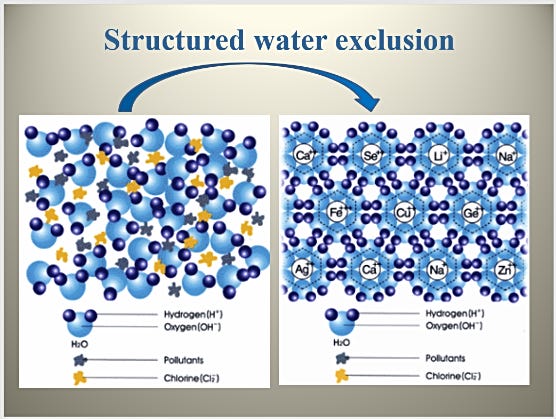
The structuring of water is also the reason blood flows, and blood is what delivers oxygen and nutrients.
When you have a hydrophilic (water attracting, not repelling) tube, like an artery or vein and you place it in a bucket of water, the water structures itself by charge separating as described above and starts flowing through the tube spontaneously, and so does blood, which is primarily made up of water. Blood circulation in an embryo begins even before the heart forms and starts pumping, i.e. it is not the pumping that moves blood, rather the heart acts more like a conductor, synchronizing the organs of the body (more on this in an upcoming post on the heart).
Now, both quantum coherent domains and structured water form more easily in cold temperatures, which means you need less light energy to produce them. This means that near the equator where it’s warm all year round you need more light energy absorbed by your body water, and conveniently there is more light available during the year with 12 hour days throughout. Whereas up north you need less light in the winters when it is cold and the days are much shorter. In both of these situations our physiology if it is in sync with the natural environment will get just what it needs.
Seasonal variations in light also affect weight gain because when temperatures are warmer and days are longer and food is plentiful, the body gets the message that it’s time to store up fat for the coming winter (remember blue light triggers cortisol, appetite, hyperglycemia and elevated insulin). When winter comes the days are short and food is naturally scarcer, and in the cold our bodies are stimulated to produce more heat, and use stored energy to do so.
However nowadays winter never comes in industrialized societies, even up north, at least the signals that indicate it’s winter never arrive: we don’t change what we eat in the winter, because we don’t eat seasonally, and we don’t change our light environment either, because we spend all day and night indoors in temperature controlled environments with the lights on until all hours - our circadian biology gets the message that it’s always summer, the days are always long, the food always plentiful (you can eat more because you keep the lights on so long) and it’s never too cold.
Our mitochondria naturally deplete water of deuterium, which is a heavy isotope of hydrogen. Water in the south has higher deuterium content while water up north is already deuterium depleted so our mitochondria may work more efficiently when exposed to it, with less need of the red and NIR spectrums to help boost their functioning, if we are living within a natural environment and drinking the local water up north (while being exposed to the natural temperature variations and seasonal foodstuffs).
Not much is known about bioenergetics, since there is insufficient funding, but it has been shown that a weak DC electrical current flows in the Qi energy pathways mapped out by the Ancient Chinese 1000s of years ago (it was shown that grounding primarily enters free electrons into the meridians of the Spleen, Stomach, Liver, Gall Bladder, Kidneys, and Urinary Bladder). The energy flows because we are made up of biological semiconductors. Semiconductors hold electrons, and when they are excited by enough outside energy those electrons start to flow as electricity.
Our biological semiconductors like collagen need to be charged with electrons from food and grounding (more grounding means you need less food), and “turned on” by incident light energy from the sun. Just like mitochondria they work better in the cold, and so need less energy from sunlight in northern winters, when there is naturally less sun available.
The concentrated blue light we’re exposed to is meant to be stimulatory - it’s the component of natural sunlight that triggers wakefulness, and stimulates the sympathetic nervous system to release catecholamines like dopamine and norepinephrine, which raise alertness, focus, motivation, BP and HR (which is why blue light dominant computer and smartphone screens are addictive by their very nature, in addition to the addictive nature of much of the software - but even if you need to use the apps, at least you can turn your screens red like I do and you may notice less of a pull to overuse them, and anyway your eyes and brain will benefit from it).

The other wavelengths of natural sunlight have a balancing effect physiologically: UV-A stimulates nitric oxide which helps relax us and elevate our mood by increasing the levels of beta endorphins, as well as lowering blood pressure. It also affects hormonal and neurotransmitter levels. Red and near infrared wavelengths have healing and anti-inflammatory effects commonly leveraged by photo-biomodulation devices. Blue light is known to be toxic to cells in the eye, but the UV-A, red and NIR wavelengths protect against that by stimulating nitric oxide production, increasing antioxidants, suppressing inflammation and increasing mitochondrial energy production and mitochondrial numbers.
Excess blue light, unmitigated by the other balancing wavelengths, raises cortisol levels, which lead to elevated blood sugar and insulin. When this becomes chronic it leads to decreased production of serotonin and melatonin, insulin resistance and leptin resistance (leptin is a natural appetite suppressant). The other wavelengths in light help to reduce stress, cortisol, blood sugar and insulin levels.
However the answer is not to simply outfit all our homes with full spectrum bulbs, or even fancy red lights at night like they hang on the roads near certain beaches to prevent circadian disruption in spawning turtles. The photoperiod, i.e. the length of the day is also important (if you really can’t avoid night time lights then dim red bulbs are the least suppressive of melatonin production, try to keep the lux between 50-100 for the best effects). We need to balance light with dark every day and throughout the year depending on where we are on the earth.
The natural spectrum of sunlight changes throughout the day. UV-A, red and NIR are most prevalent in the early morning and late afternoon, while UV-B, which stimulates vitamin D production is most prevalent in midday.
UV-B is important for stimulating vitamin D production which can increase insulin secretion, inhibit the renin-angiotensin system of the kidney to help lower blood pressure, influence the production of sex hormones estrogen and testosterone, modulate the immune system, and directly affects the expression of over 900 genes.
UV-B can damage skin, but the effect is mitigated by preconditioning your skin with the protective wavelengths in morning sunlight, and further decreased by getting healing late afternoon sun. These daily variations in light characteristics highlight the importance of getting regular sun exposure throughout the day, whether direct or indirect from reflected light even while in the shade outdoors.
Knock-on Effects
Serotonin production is stimulated by UV-A light in the morning, and as mentioned above, it is the precursor to melatonin, production of which is stimulated by darkness. If we don’t get enough light we don’t make enough serotonin, which means we won’t make as much melatonin later on even if we don’t turn on the lights.
And simply taking melatonin on a chronic basis to fix the sleep problem will lead to other problems as mentioned briefly earlier, most obviously too much serotonin (also seen with SSRI use) since it’s no longer being converted to melatonin.
Acute symptoms of higher serotonin include restlessness, agitation, confusion, hallucinations, tachycardia and arrhythmias, high blood pressure. tremors, nausea, vomiting, diarrhea. Chronically elevated serotonin will lead to increased cortisol production, prolactin excess, and altered levels of thyroid hormone, growth hormone, sex hormones, oxytocin, and insulin.
Let’s trace out the further implications of just the first of those effects of higher serotonin: chronically elevated cortisol will lead to weight gain, insulin resistance, hypertension, heart disease, low immune function, muscle weakness, osteoporosis, mood disorders, cognitive impairment, reproductive hormone imbalances, skin and hair problems, and digestive upset. It does this by affecting the levels of insulin, thyroid hormones, sex hormones, growth hormone, prolactin, adrenaline, leptin and ghrelin.
And we could keep going down each of these pathways documenting how each disruption spreads outward in every widening concentric circles over time from any unnatural tweak that is made to our physiology.
This is why we can only effectively speak to our bodies using the natural signals they’ve been designed to understand.
Health is a function of an irreducibly complex system of environmental inputs. You can never put an irreducibly complex environment in a simple pill.
Hormonal Rhythms
All our hormones are also on circadian rhythms.
So if you get too much light throughout the year (by turning the lights on at sunset) you’re going to burn out your thyroid, adrenals, ovaries/testes, and everything else that is stimulated by light. Just like overeating refined carbs may help precipitate pancreatic exhaustion and diabetes, consuming too much light and the wrong kind of light (especially blue without the rest) will necessarily lead to exhaustion of all the hormonal systems that help you function during the day light hours (and disrupt nighttime-peaking hormones like melatonin, growth hormone, prolactin, and leptin). This will lead to the typical diseases we see all the time in the modern world: insulin resistance and diabetes (via stress, cortisol and glucose), cancer (via the last), hypothyroidism, heart disease (via stress and sympathetic overactivity), “adrenal fatigue,” chronic fatigue syndrome, burnout, autoimmune diseases (disrupted POMC), hypertension, etc.
Thank you for reading Dr. Syed Haider. This post is public so feel free to share it.
Conclusion
So if you’re struggling with jet lag or insomnia, try eating early and getting your morning sun (and if its a bad case then consider some of the other things above) and let me know what happens.
And if you’re struggling with chronic disease, try aligning yourself with your natural environment in order to optimize your hormonal cycles and other bodily functions that are designed for the natural environment.
Finally to close the loop on the title re: Sherpas.
Why don’t they get jet lag?
Because they only fly up and down Mt Everest.
Ha ha.
Seriously though, there is no research I could find on jet lag differentials by population or background, but it would make sense that if jet lag is in part due to a form of high altitude sickness and is more likely in those living out of sync with their natural environments, then a Sherpa would be less prone to it since they are acclimated to high altitudes and live in touch with their natural surroundings.
Let me know in the comments what you think!

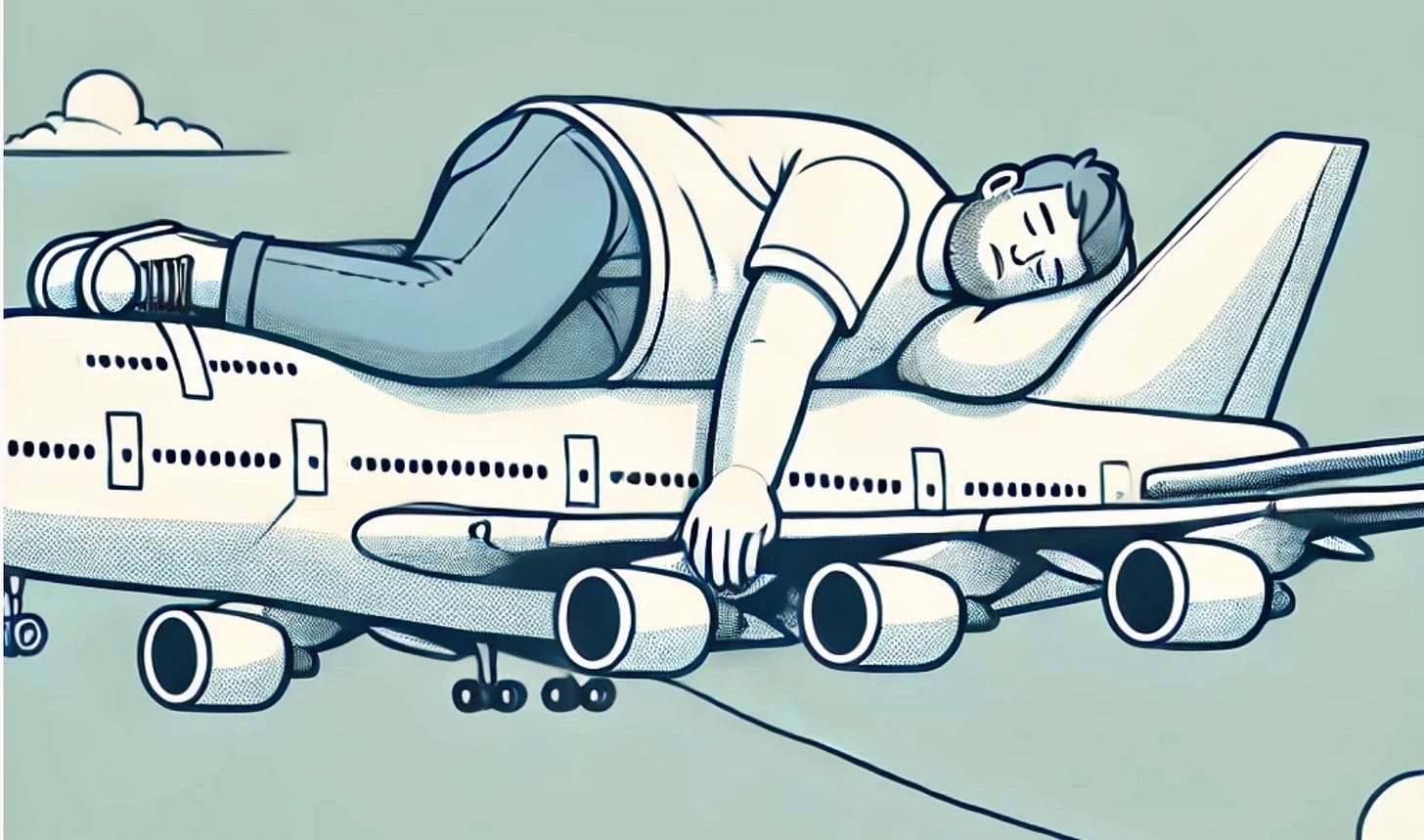




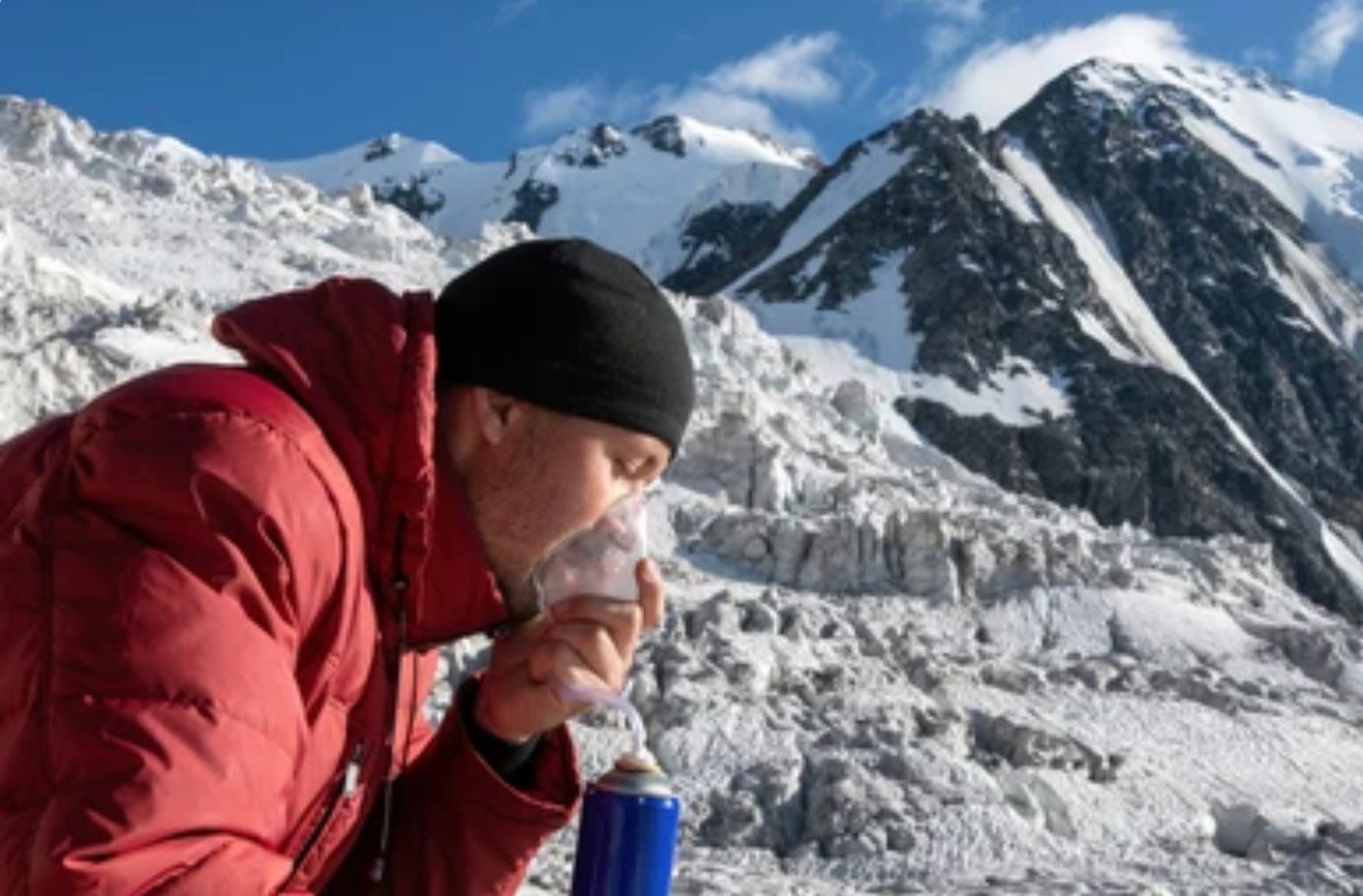
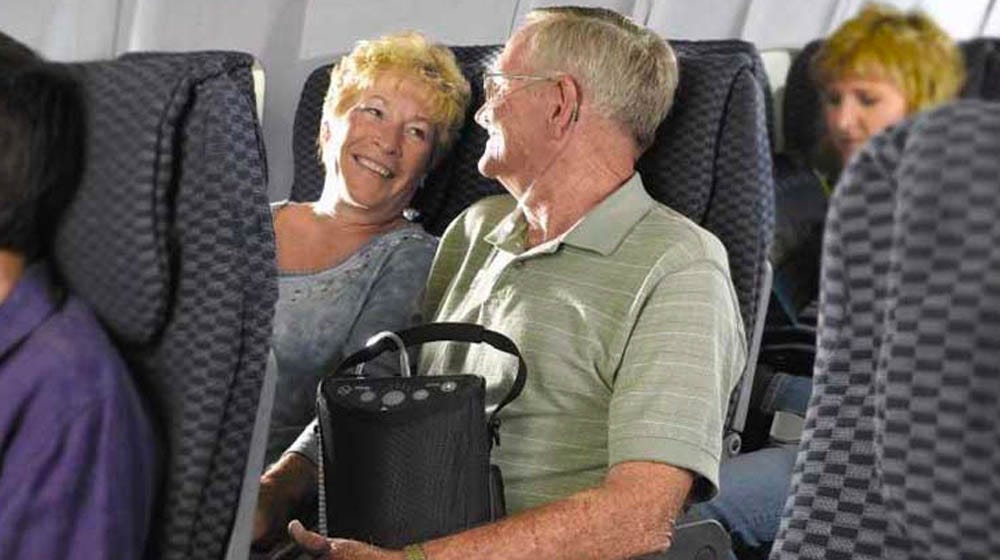
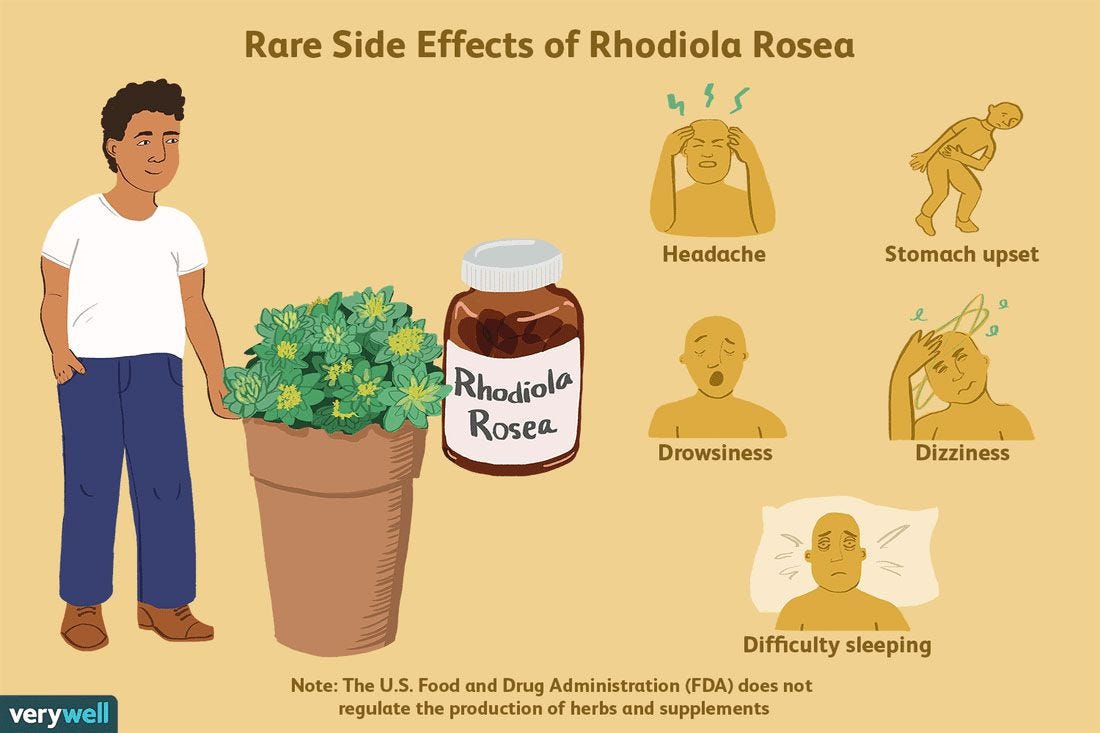
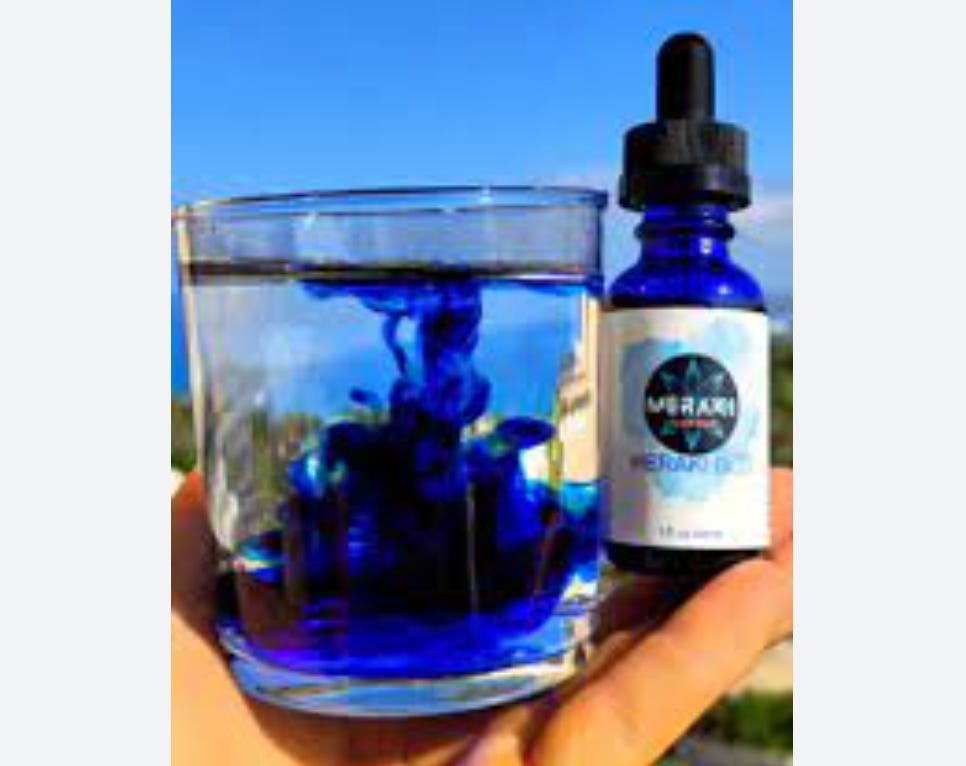
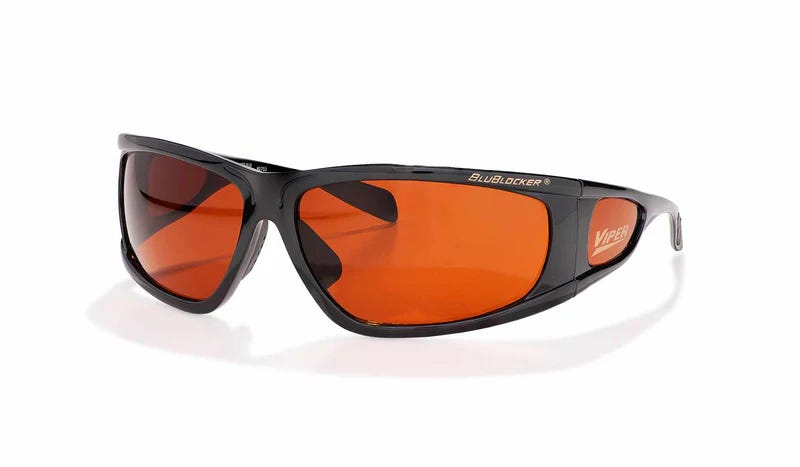






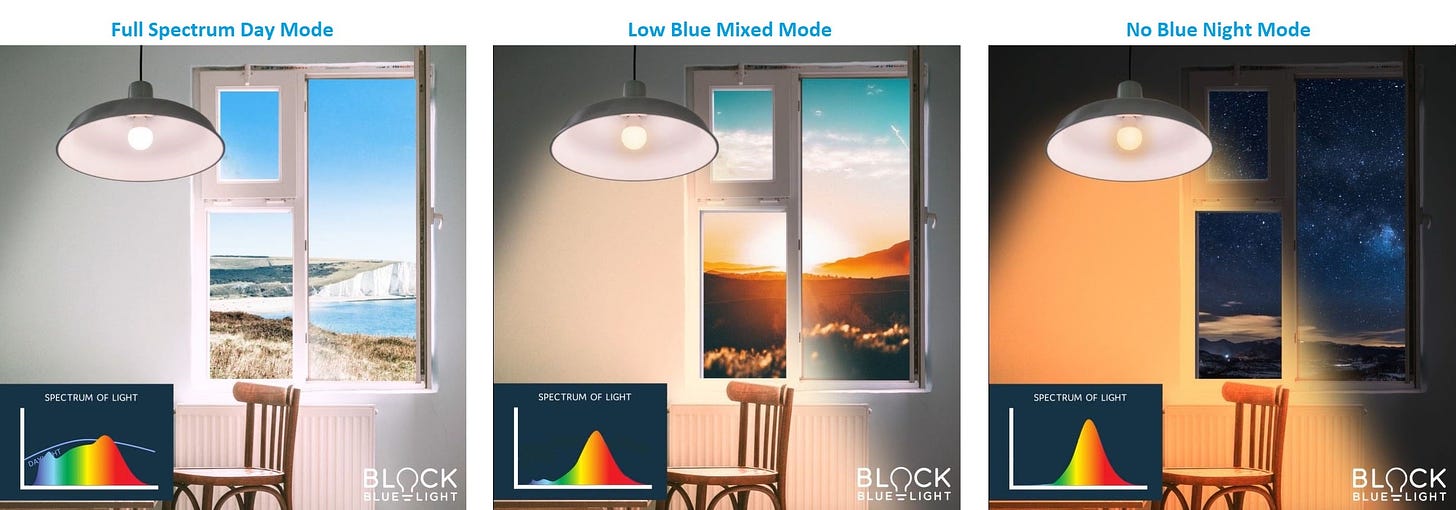
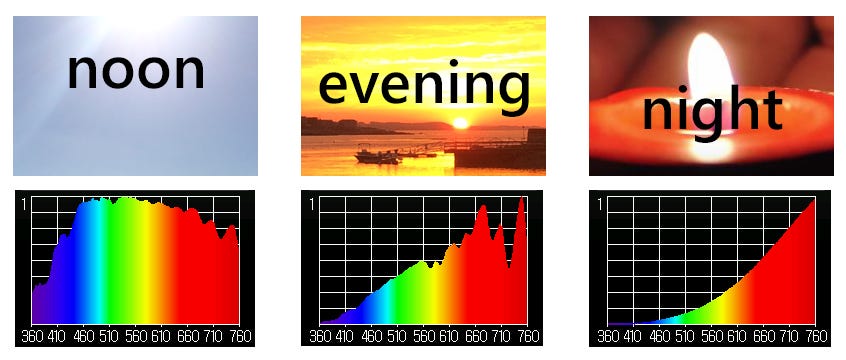

No comments:
Post a Comment